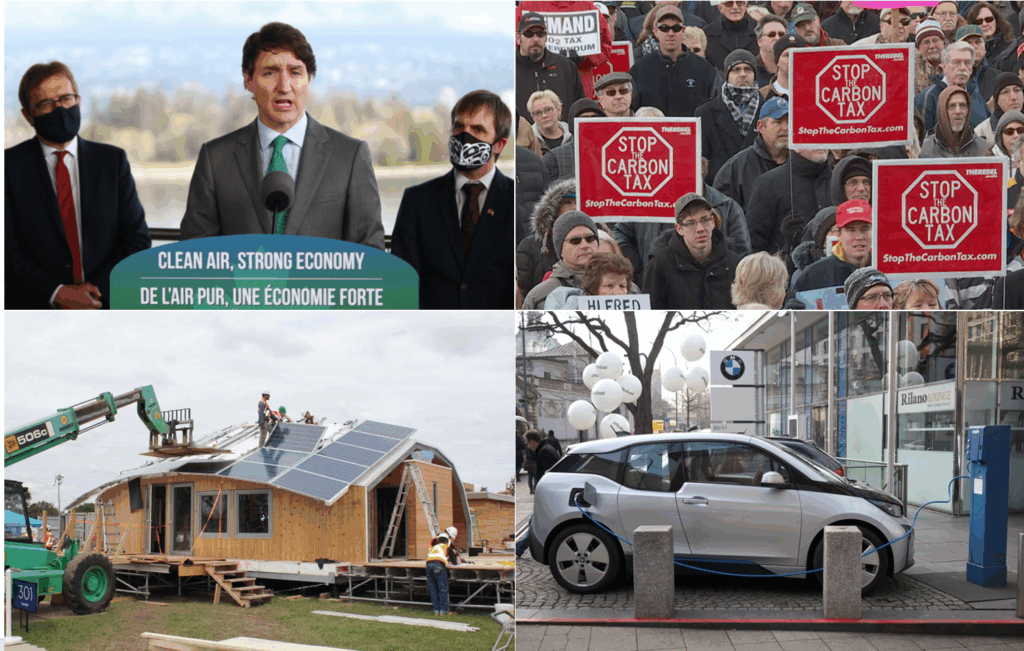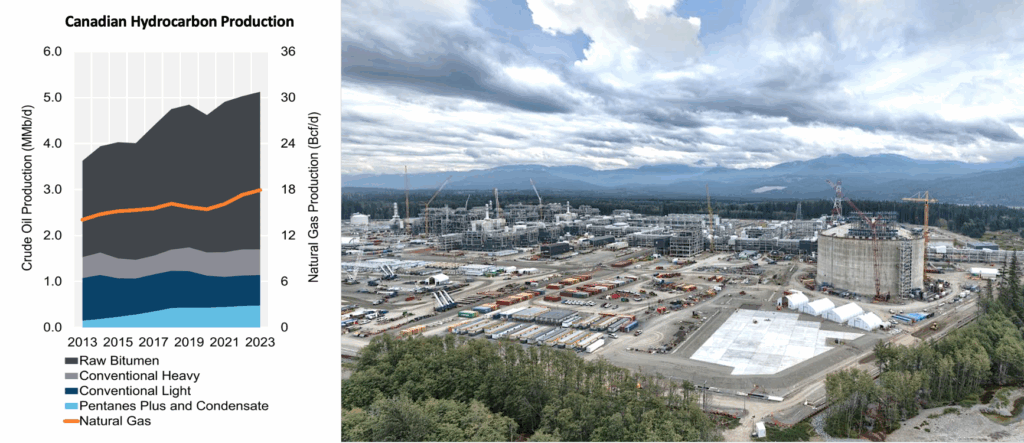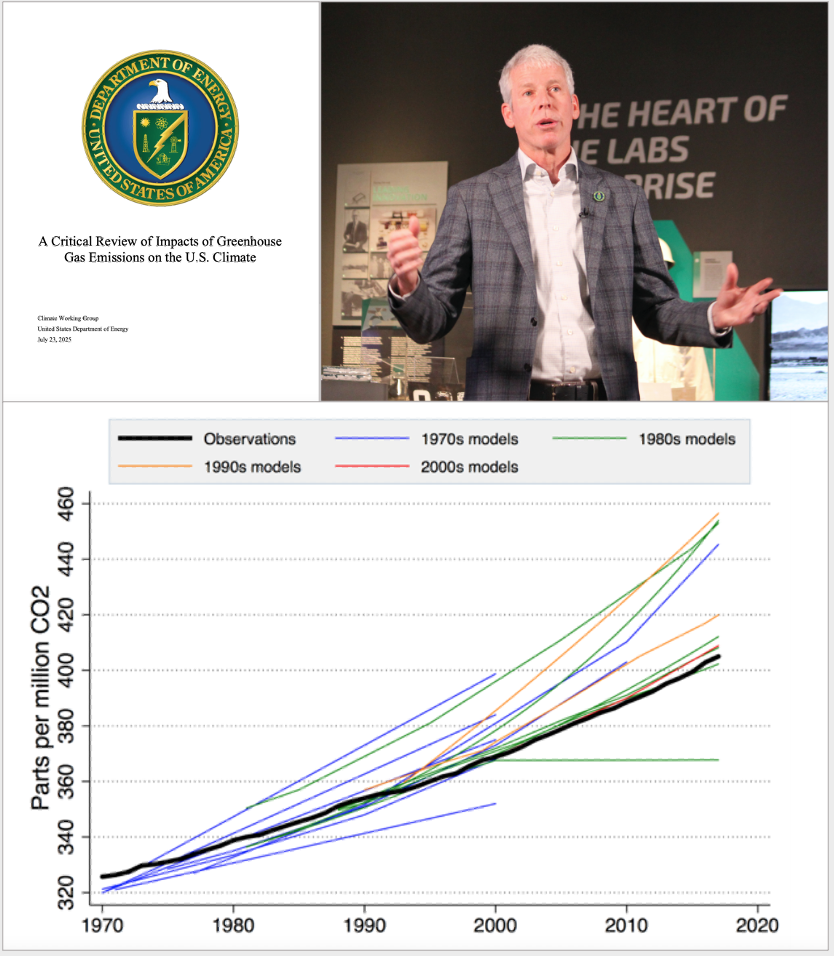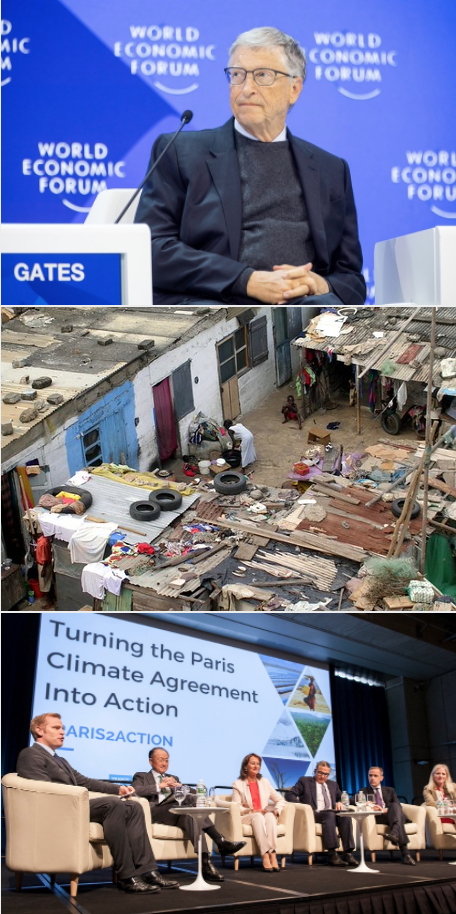In 2015 the newly elected Justin Trudeau government signed the Paris Climate Agreement, which commits signatory countries to “increasingly ambitious climate action” aimed at limiting the forecast increase in global average temperature to 1.5°C by the end of the century. The following year Trudeau’s Liberal government imposed the Pan-Canadian Framework on Clean Growth and Climate Change, which included more than 50 measures aimed at “reducing carbon emissions and fostering clean technology solutions.” Key among them was economy-wide carbon “pricing” – Liberal-speak for taxes on Canada’s industries and every citizen.
Many further measures followed, culminating in the announcement in 2022 of the 2030 Emissions Reduction Plan, which commits Canada to slashing greenhouse gas (GHG) emissions to 40 percent below 2005 levels by 2030 and to achieve net-zero emissions by 2050. The plan included $9.1 billion for retrofitting structures, subsidizing zero-emission vehicles, building battery-charging stations and subsidizing solar panels and wind turbines. It also mandates the phase-out of Canada’s last remaining coal-fired power generation, and stringent emissions and energy-efficiency standards for vehicles and buildings.

Other “green” initiatives have included the “On-Farm Climate Action Fund,” a nationwide reforestation initiative to plant 2 billion trees (almost none of which were actually planted), the “Green and Inclusive Community Buildings Program” to promote net-zero standards in new construction, and the Federation of Canadian Municipalities’ federally-funded “Green Municipal Fund” to support decarbonization actions.
That’s a staggering list of nation-impoverishing subsidies, taxes and restrictions. What about the damage to the industry that contributes most to the Canadian economy – and whose economic vitality and continued growth would at least have helped enable the Canadia economy to support the above-listed government spending?
How has energy policy affected Western Canada’s ability to export its oil and natural gas resources to international markets?
Opting for ideology over good sense, the Trudeau government cancelled the Northern Gateway oil export pipeline to B.C.’s northern coast – even after exhaustive study and being granted a permit by the previous Conservative government. That cost the project’s proponents more than $1 billion in pre-construction expenditures and stranded hundreds of billions of dollars worth of crude oil in the ground. Ottawa also stood by as the Quebec government’s politically motivated posturing killed off the Energy East project to carry Western-produced oil, via Central Canada’s refineries, to New Brunswick – and onward to European markets. Meanwhile on the natural gas side, the political and regulatory morass the Liberals created all-but crushed hopes to make Canada a world-class exporter of liquefied natural gas (LNG), leading to cancellation of all but one of 12 major LNG proposals.
‘In order to achieve global net zero by 2050,’ writes Lomborg, ‘we would have to remove the equivalent of the combined emissions of China and the United States in each of the next five years. This puts us in the realm of science fiction.’
But have all those taxes, all that deficit spending and all those project-killing regulatory measures even reduced Canada’s fossil-fuel consumption? As internationally respected environmental statistician and author Bjorn Lomborg has reported, between Trudeau’s election and 2023, fossil fuels’ share of Canada’s energy supply actually increased from 75 to 77 percent. But that wasn’t due to any sort of economic boom; energy consumption rose entirely due to Canada’s immigration-fuelled population boom.

The dismal results weren’t for lack of trying. Two newly released studies by the Fraser Institute have found that Ottawa and the four biggest provinces have either spent or foregone a mind-numbing $158 billion to create just 68,000 “clean” jobs, increasing Canada’s “green economy” by a minuscule 0.3 percentage points to 3.6 percent of GDP – an eye-watering cost of over $2.3 million per job “created”. As for saving the world, or even making a real contribution towards doing so, Canada contributes just 1.5 percent of global GHG emissions. As I’ve mentioned in the past, if Canada disappeared from the face of the Earth tomorrow, the emissions growth from China and India would make that up in just a few weeks.
That is Canada’s emissions-reduction debacle. What’s the global picture? A decade after the Paris Climate Agreement, over 81 percent of the world’s energy still comes from fossil fuels. And world energy demand is up by an estimated 15 percent, from 564 “exajoules” (one million million megajoules) to an estimated 650 exajoules last year. As Lomborg also wrote in the above-mentioned article, “In order to achieve global net zero by 2050, we would have to remove the equivalent of the combined emissions of China and the United States in each of the next five years. This puts us in the realm of science fiction.”
Have federal and provincial spending initiatives aimed at building a “green economy” resulted in significant job creation or greenhouse gas emission reductions?
Despite the ambitions of the Liberal government’s Pan-Canadian Framework on Clean Growth and Climate Change introduced in 2016, the return for the Canadian economy has been minimal if not negative. Studies by the Fraser Institute covering the period between the 2015 election of the Justin Trudeau government and 2023 found that the federal government and the four largest provinces spent or forewent $158 billion to create only 68,000 “clean” jobs. This equates to a cost of over $2.3 million per job created and increased the size of the “green economy” by just 0.3 percent of Canada’s GDP. Furthermore, fossil fuels’ share of Canada’s energy supply actually increased from 75 percent to 77 percent during this same period, largely driven by population growth rather than industrial expansion.
Thankfully, a measure of rationality appears to be returning south of the border. In late July, the U.S. Department of Energy issued a report assembled by a team of highly credible climate scientists which asserted that, “CO2-induced warming appears to be less damaging economically than commonly believed and aggressive mitigation policies could be more detrimental than beneficial.” Backed by copious amounts of scientific data, it noted that “claims of increased frequency or intensity of hurricanes, tornadoes, floods and droughts are not supported by U.S. historical data.” The report also concluded that, to the extent climate change is occurring, U.S. policy actions are expected to have “undetectably small impacts on the global climate.”
This was music to the ears of U.S. Secretary of Energy Chris Wright, who responded to the report by commenting, “Climate change is real…but it is not the greatest threat facing humanity …(I)mproving the human condition depends on access to reliable, affordable energy.” Responsibly produced Canadian oil and natural gas clearly should be part of that solution. The same day as the aforementioned report was issued, the Environmental Protection Agency released a proposal to rescind the “endangerment finding” that in 2009 had designated CO2 and other GHGs as pollutants. The endangerment finding provided the rationale for blocking oil and natural gas development while imposing a succession of green policies and regulations (like EV mandates) that, the current Administration calculates, cost the U.S. economy at least US$1 trillion in foregone growth.

This leaves little doubt as to where our largest trading partner stands on GHG emissions. But does the U.S.’s backing away from net zero ideology mean our planet will become unlivable? Concurrently with the Trump Administration’s hard-headed economic focus comes news that even some eco-zealots are re-evaluating the situation.
Don’t expect the man who helped launch the Glasgow Financial Alliance for Net Zero at 2021’s giant global climate change conference in that city, and co-chaired the organization until Trudeau’s resignation in January, to soften his stance on his favourite futile climate change measures: carbon taxes.
Last month Ted Nordhaus, a prominent American climate catastrophist, published an essay admitting that he now realizes that the Intergovernmental Panel on Climate Change’s forecast for global warming through 2100 is based on an impossible presumption: that the world will experience decades of simultaneously soaring population, robust economic growth and low technological change. But, noted Nordhaus, the three of those do not occur together. Increasing prosperity, for example, tends to dampen a country’s population growth, in turn holding down GHG emissions increases. Economic growth also typically coincides with technological improvement, which enables improvements to energy efficiency. Nordhaus is, in other words, telling us to expect a lot less global warming than the official predictions.

Even more dramatically, two weeks ago Bill Gates published a personal essay that, while not challenging global warming forecasts, says the effects won’t be “cataclysmic”. Accordingly, Gates writes, humanity should focus not on preventing disasters that won’t even occur but on alleviating the poverty and disease that are before our eyes right now. “Although climate change will hurt poor people more than anyone else, for the vast majority of them it will not be the only or even the biggest threat to their lives and welfare,” Gates writes. “The biggest problems are poverty and disease, just as they always have been. Understanding this will let us focus our limited resources on interventions that will have the greatest impact for the most vulnerable people.”
Gates’s and Nordhaus’s changes in tune are late-in-the-day conversions, to be sure; the enormous economic damage wrought by three decades of doom-mongering won’t be undone overnight. Still, better late than never.
Despite all of this, however, don’t expect the man who helped launch the Glasgow Financial Alliance for Net Zero at 2021’s giant global climate change conference in that city, and co-chaired the organization until Trudeau’s resignation in January, to soften his stance on his favourite futile climate change measures: carbon taxes. Prime Minister Mark Carney’s just-released budget saddles our already-struggling industries with carbon tax increases of $80-$170/tonne of CO2-equivalent emissions by 2030. Doing so increases Canadian businesses’ competitive disadvantage against our most important trading partner and does nothing to help the environment. It only puts Canada further offside global energy policy trends – and extends our country’s sad decline.
Gwyn Morgan is a retired business leader who has been a director of five global corporations.
Source of main image: Shutterstock.





